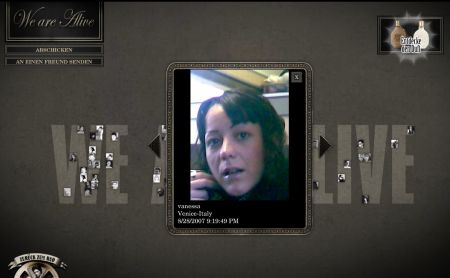von Roland Hachmann | Sep. 5, 2007 | Ad News, Blog, Digital Marketing, Digital News, Marketing, Online Advertising, Social Media Marketing
In times of overmarketed standard target audiences, everyone is trying to find new potential in niche audiences. The new trend is not about a niche per se, because moms are a large segment in general. But not on the net. Online, this segment is not yet properly covered and targeted, even though some studies seem to point out the obvious.
In Germany, there are several sites competing for this apparently very lucrative target audience. Two that I know of are netmoms.de and mamiweb.de. Looks like there is a real run on covering this segment all of a sudden.
Caff now pointed me to several posts/stories about marketing to moms on the web:
The impact of her purchases or what she touts can spread on the Internet far beyond her e-mail list or blog. If your product or service passes the Alpha Mom test, it’s gold. That’s why the nation’s biggest marketers, from Procter & Gamble to General Motors to Nintendo, are focusing on this remix of the modern mom.
The combined study found that 69 percent of online moms subscribe to 1 to 5 retail emails. The study also reported that 86 percent subscribe for discounts and coupons. Also, online moms are more likely to click through emails that include product pricing (62 percent) and photos (61 percent).
When marketing to moms, you need to take advantage of the networks they build. Moms love to talk about what they’re buying, so if you have a good product or message, the word will spread. Virtually all new moms join some sort of play group or support group, so it’s wise to get your message across to these members.
If moms are your target market, you can forget about trying to buy their loyalty with cutesy graphics or long-winded offers. Today’s email-savvy moms respond to price discounts and free shipping in email messages from a handful of trusted senders.
von Roland Hachmann | Sep. 4, 2007 | Blog, Digital Culture, Digital Marketing, Digital News, Marketing, Marketing Trends, Social Media Marketing
At DMNews, there is a column about the impact of social media on email marketing, which is quite interesting:
Today’s younger generation is the single best predictor of future behaviors. And right now they are leveraging multiple social Web sites: MySpace and Facebook to chat with friends, Evite to send party invitations and LinkedIn to stay front and center for new business relationships. E-mail for these users has become a tool used strictly for the purpose of collecting business information — special offers, promotions and business information.
As we increase our usage of social networks, our use of e-mail will inevitably decline, reducing the success of e-mail marketing campaigns. Marketers need to take the time to understand what sites their users are comfortable in and then evaluate marketing opportunities in those spaces.
I don’t think it’s only that. (But it will be a large factor.) The other email killer is things like skype and other chat tools, mobile phone messaging, and RSS.
For any communication with your contacts, ther is a better way than email. Or at least there will be. With spam still filling most people’s inbox, they will undoubtedly move to other, uninterrupted channels and only open their email accounts to separate the „bacn“ from the spam.
So email marketing is not dead, as people will continue to use it. But in the next 5 years or so, we’ll probably see a shift in usage patterns, decreasing the target audiences attention to email. It is now, that we need to test the alternatives, so that we have working tactics in the future.
Try out producing widgets for facebook, offering RSS feeds (this should already be a no brainer!), sponsor chats and communities (or offer them yourself), and may be start advertising on the long tail of the web…
von Roland Hachmann | Sep. 3, 2007 | Blog, Digital Marketing, Digital News, Marketing
Jeremiah Owyang posted an interesting thought-model of three essential elements of web strategy.
The three spheres, which are influencing each other, intersecting and overlaying are Business, Community and Technology:
The business sphere requires a strategist to understand the long term objective of a website and it’s goals.
The Community: The Web Strategist must understand (by using a variety of techniques and tactics) what users want. This is commonly known as User Experience Research which will create and craft a ‘mental model’.
Lastly, a Web Strategist needs to know how each and every tool and technology work, they’ll need to know the strengths, benefits, limitations and costs. This also applies to human capital, and timelines.
His viewpoint is that of a web strategist working within a company, being, for example, in charge of the corporate website. But it can also translate to digital planners in agencies, who need a similar profile.
von Roland Hachmann | Aug. 30, 2007 | Ad News, Blog, Digital Marketing, Digital News, Marketing, Online Advertising
Martina from Adverblog writes about a new site for a new Diesel Fragrance. It’s based on a series of videos and on the omnipresent shout out „I am alive“.
Throughout the whole site you find lots of this „I am alive“, it can get anoying at some point so be ready to turn the speakers of.

Of course there is some user generated content possible, you can upload a video of yourself shouting „I’m alive“ or upload a picture of yourself. There is also a „Chatroom“ looking like a cinema. But it was first empty and soon entering guest1237 and guest 1218 wouldn’t answer…

There is a lot more to explore, so try it out!
von Roland Hachmann | Aug. 29, 2007 | Ad News, Blog, Digital Culture, Digital Marketing, Digital News, Marketing, Online Advertising, Social Media Marketing
Dave Weinberger, one of the authors of the cluetrain manifesto („markets are conversations“) expresses his concerns over the increasing wrong adoption of this idea by marketeers. In a comment to this post by Chris Heuer, he writes the following:
Marketing has to change. It has to recognize that market conversations are now the best source of information about companies and their products and services. It has to recognize that those conversations are not themselves marketing — you and me talking about whether we like our new digital cameras is not you and me marketing to each another. Neither is our conversation a „marketing opportunity.“ But the temptation to see it as such is well nigh impossible for most marketers to resist.
Fortunately, the people leading the thinking about this generally do honor the conversation as the thing that must be preserved. How the meme gets taken up, however, should worry us. We need to help marketers resist their deeply bred urges. We need to make preserving the integrity of the conversation as central a marketing tenet as is not lying about product specs or prices.
This point is critical, some elderly agency folk still get this mixed up sometimes. Markets are conversations, but not all conversations are marketing. And marketing isn’t necessarily a conversation (even though a lot of marketing could be, in the future).
Marketing also isn’t about „letting the crowd decide everything“, in fact conversational marketing is not about „wisdom of the crowd“ at all. This also gets mixed up often by elderly agency folk.
As Chris writes:
More broadly, I think what is happening is really about Market Engagement – how companies interact with the market’s they serve – how companies relate to the people within those markets through product experience, conversations and media.
This doesn’t mean that brands need to open up completely loosing their identity (because of some „wisdom of crowd“ interfering with brand communication) – but it does mean that brands need to engage in 2-way conversations instead of keeping up a monologue irrespectively of whether people want to listen or not.
von Roland Hachmann | Aug. 29, 2007 | Ad News, Blog, Digital Marketing, Digital News, Marketing, Online Advertising, Social Media Marketing
Google introduced video overlay ads for YouTube, as this article on read/writeweb says. As a user I don’t like the idea of these ads“interrupting“ me, but it will infact be a good way of better monetizing the video experience. They’re offering it on a CPM basis for now, which seems odd to me, but I guess that might change once they know how well it is accepted?
Also, they don’t seem to be the first to launch this (by far not), as this Tecrunch article states.



 Wo ich sonst so bin...
Wo ich sonst so bin...